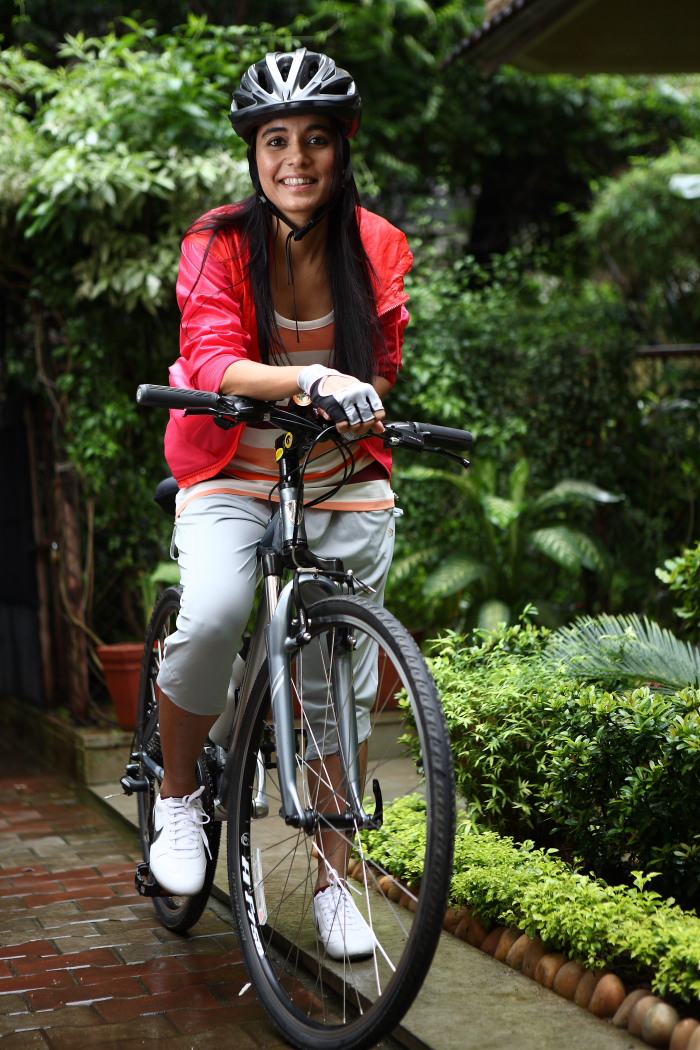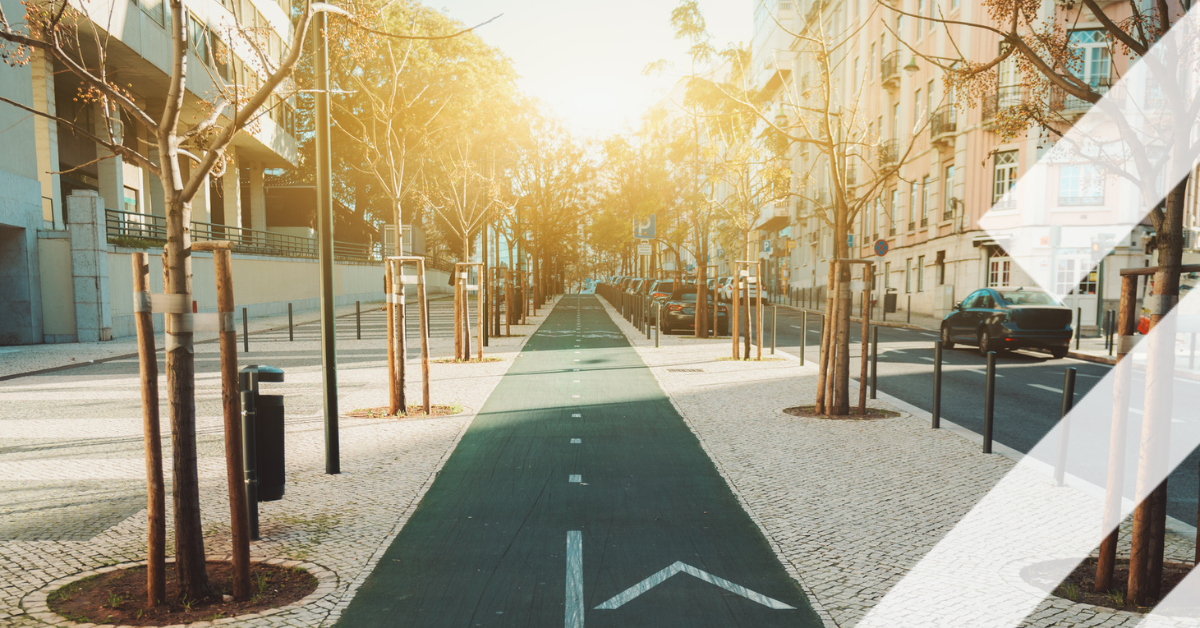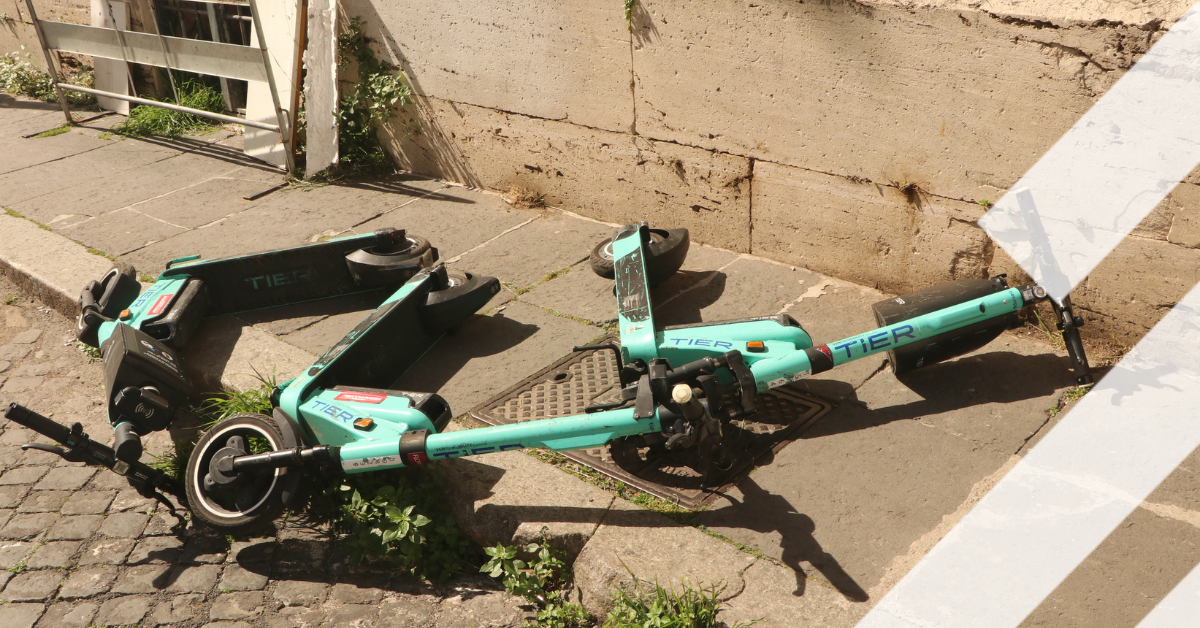People around the world choose the bicycle more often since the outbreak of COVID-19. Did you know, the world counts 130 Bicycle Mayors? They are part of the international network BYCS. In this second edition of this series we take a look at Mumbai (India), Rome (Italy) and Victoria (Canada), with different challenges asking for different solutions.
Cycling in Mumbai, India
The city of Mumbai has 20 million inhabitants. In India the bicycle is a multifunctional vehicle used for recreational purposes, endurance and competition. The major obstacles include a lack of infrastructure to support cycling and other high risk areas like potholes & drain grates. The city has 2,000 km of roads and more than 65 flyovers exclusively designed for cars and two-wheeler users. Since the outbreak of COVID-19 the use of cycling has increased by 35%. Firoza Suresh started to cycle to work in 2009 and from that point on her mission was to make Mumbai like Amsterdam when it comes to cycling. Since 2019 she was appointed Bicycle Mayor of Mumbai, but it is clear that her mission started years earlier.
‘I like to cycle during traffic hours, because the cars are like a cushion.’
‘In 2009 I started to cycle to work. Trains are very crowded so at the time my motivation was not the environment but escaping the crowd. Distance to my work was 12 kilometres, even for Mumbai standards this is quite far, but it is doable. Mumbai has mostly linear streets and unlike you would expect, I actually enjoy cycling during traffic hours, because cars drive 10-15 km per hour and it feels like a cushion to me. Most casualties with bicycles occur in leisure times. When the roads are empty, people tend to speed.’
Cycle2Work for the elite
‘After experiencing the importance of cycling, I quitted my job and started the Smart Commute Foundation. Before the eighties cycling to work was quite common, but this changed in the nineties. The bicycle was seen as a poor-man’s vehicle. In 2012, I was the first in India to start the movement called Cycle2Work. On World Environment Day June 5, a Friday morning we organised the first event. People were offered breakfast in the heart of the commercial hub in Mumbai before they proceeded to work. Even Bollywood actors cycle to work. This is great for the promotion of cyclists and our PR.’
Fight transport poverty: MeCycleRider for 10 million women and children in slums
‘Business travel appeared not to be low hanging fruit. 40-50% of the people in Mumbai live in slums. So I visited a slum and saw kids playing with rusty bicycles. I asked a child if he would like me to take him for a day to the beach on a bicycle. The spark in his eyes was so bright, that I had to start this new project. They did not even bother to check in with their parents before they said yes. But most of the kids did not have bicycles. So I started a donation programme. I brought bicycles to the children and together with the volunteers we took them to the nearby beach, had breakfast, played and dropped them back home.’

‘The kids wanted their own club and named it: MeCycleRider. One can try to change policy and make sure more cycle roads are created, but I chose to build a critical mass. If you don’t have critical mass, cycle tracks are just “green paint” which are not used. The urban poor appeared to be the critical mass for my project. So my target is to get all the urban poor especially kids and women to bicycle by 2023.’
Cycle Chala City Bacha: Save your city by cycling and shared responsibility with Councillors
‘Mumbai has 24 administrative wards. As a Bicycle Mayor I felt a strong sense of responsibility towards my title. During COVID we started the Bicycle Councillor Programme in which we started screening cyclists. 150 cyclists applied to be a Councillors for their ward. Now we have 24 wards and a Councillor in every part of the city organising ward rides and crowdsourcing data within their community. This gave me hands and feet! A whole army to make Mumbai the Bicycle Capital of India by 2030.’
Cycling in Rome, Italy
Francesco Iacorossi has been involved in cycling and promoting sustainable European cities via EU- programmes for quite some time. He was appointed as Bicycle Mayor of Rome in 2018, the first Bicycle Mayor in Italy. ‘Rome has 3 million inhabitants and 700,000 motorbike. 65% of people going around in the city are private and motorised vehicles. We suffer one fatality every two days.’
‘Road safety and environment need to improve. The biggest challenge in this is the change of behaviour. A cultural change is needed. The majority is not born on a bicycle, but used to a car centric environment. Double parked cars have been the norm. As soon as I had the age to drive I did. Cycling is only for leisure, so we have to create a breakthrough to have a better life and society.’
Learn from cycling solutions in Amsterdam and Copenhagen
‘We benefit a lot from the European programme Handshake, with Amsterdam as our tutor. Although we are not Amsterdam, we are a lot luckier than Amsterdam or Copenhagen used to be. Now we can learn from their experiences and be better prepared. We can anticipate for instance on a parking problem coming when more Romans will use the bicycle in the future. Every time we create new cycling lanes or parking spots, shop owners need special attention, because they are afraid losing customers, because they can no longer park their car.’
‘COVID gave active mobility a boost. 60% of the citizens own a bicycle. Before the outbreak only 1% cycled systematically and this has increased to about 3-4%. To me this is a bitter sweet experience, because I have been motivating active mobility since 2013 and it’s sad to see something terrible needs to happen for it to change. I think before the pandemic we were not happy and scared to be on the streets and we need to rethink the space and reallocate it fairly for all users.’

When Rome goes sustainable: Park bicycle to watch a match
‘Together with the European Cyclist Federation the embassies and other partners, we organised a campaign called “When Rome goes sustainable”. We created a secure space to park your bicycle at the stadium to go watch the match. The first year, we deployed 300 bicycle spots and the parking was half full, even though it rained cats and dogs. Its gaining popularity and Dublin is starting the similar campaign at sports events. Now the missing link is cycling path to the stadium. We miss 200 meters to go straight to the stadium. This is the next step.’
‘With regards to cycling paths, we are painting cycling paths on the main arteries, so we no longer hide in the smaller streets. In total we have 20km of painted cycle paths. Every day about one thousand cyclists commute. This is a really big result for us. Smart and remote working has been our biggest ally and made people see the benefits such as saving both so much money and time. I hope this will stay in place after the pandemic.’
Road safety: Junior Bicycle Mayor
‘Another next point of attention is trying to motivate the people who are not cycling yet. What stops them from cycling? Is it the perception of danger? My focus is accessibility and active mobility for everyone. A better city for those who aren’t fortunate enough to get around the city by themselves. From children and parents pushing the trolley to disabled people. To measure the perception of danger, we pose the Romans the question: would you let your child to cycle on his/her own? This is the most important testcase. Cycling without fear will be the solution.’
‘We also started to teach children about cycling at schools together with local police. A local Ngo started Back to School programme. I also plan to gain a junior Bicycle Mayor.’
‘The number of cars remained the same, but a large number of people who owned a motorbike switched to e-bike. E-bikes have turned out to be a big success in Rome. I have an electric cargo bike and a normal e-bike to take the children to school. I hope we can motivate more Romans to commute by bike. We estimated that 500,000 Romans work less than 5km from home, which is a feasible distance to cycle. Next step is to organise a campaign: do you really know how close you are from your office? You don’t want to spend two hours in traffic, right?’
Cycling in Victoria, Canada
Susan Stokhof is the Bicycle Mayor of Victoria since 2019, the first in Canada. Susan has been involved in promoting cycling as an everyday activity for years. Victoria is by the sea and it has 87,000 inhabitants in the inner city and 370,000 people in the region. Victoria has the mildest climate in Canada and moderate topography. Susan’s main challenge is to normalize cycling and elevate it to a legitimate form of transportation in a region where sport and recreational cycling is the norm. ‘The more people buy into the idea that cycling is just a normal everyday activity that millions partake in every single day, the more likely we are to build better bicycle infrastructure. I believe we need to be the change we want to see.’
‘One time I took off my rain pants and my jeans came down with them!”
‘My true motivation came when I met my Dutch husband and we went carless for six years. At the time everyone was cycling on a sports bike with back packs, more like an exercise. I saw very few women travelling by bike as a mode of transport and there was no real cycling infrastructure in place.’
Cycling for business women
‘I did not want to put on raincoats pants as a way to dress on the bicycle. One day when I took off my rain pants, my jeans came down with it ;) This needed to change. So I started my online boutique with bicycle accessories, encouraging women to dress for the day; not for the bicycle. Dutch women ride ‘omafiets’ as do I, and attach their bag to the handlebar. I tried this once as well in Amsterdam and I fell over. So this is a skill! It is something you need to learn as well and know when your bag is too heavy…So I sold things such as panniers to attach to the bicycle and you can also use it as a stylish hand bag. And rain capes are very popular too. This motivated a lot of professional women to commute by bike.’
‘Road safety for bicycles: Painted lines are not safety’
‘One of the obstacles I’m facing, is reaching out to the identified 60% of would-be cyclists. According to old data 6,6% of the people are cycling. Four years ago cycling infrastructure in Victoria came to improve with the creation of separated bicycle infrastructure. An update to the painted lines we experience daily in many areas throughout the region. Cities should be built for people, our most vulnerable, who walk, cycle, and roll around on our city streets and sidewalks.’

‘Returning from Amsterdam where I took a summer program called Planning the Cycling City, I experienced a sense of freedom when cycling through the city, it was so relaxing. Returning to Victoria on my first day cycling next to car traffic my heart was racing. That was the moment that I realized that there is no safety in a painted line. After that I only chose the smaller streets with quiet traffic. The local government is finishing its first 32 km of separated bicycle infrastructure and one-way traffic streets by the end of next year. All of this feels so amazing.’
‘Since COVID we see a different mobility pattern. More people cycle during the day. The amount of people has not changed, but the number of trips has increased. Government Street is one of the beautiful streets in the city centre that has been adapted for the mobility of people. Traffic is slow and it has nice places for people to sit and you can have a drink or bite to eat outside. This increases the feeling of community. Something positive that this COVID mess brought us.’
‘What I like to see is for other municipalities to reallocate and design space for cyclists, because people can cycle longer distance. In 2018, when they started talking about cycling infrastructure in Victoria, I was involved in meetings and committees to help them understand what kind of cycling infrastructure is necessary.’
‘I always use Amsterdam as example. Of course: we may never be Amsterdam, but we can be our own version of Amsterdam. We can utilize some of the planning that has been manipulated and played with and learn from that. We do not need to reinvent the wheel; that is not necessary.’
Cycling future in Victoria
‘It can never finish. If we look at cities in the future with more capacity of people, we need proper infrastructure to support that. We are not seeing eight year olds riding bikes to school on their own and I’d like to help foster that change. I hope we can start the Bicycle Hero campaign and find junior Bicycle Mayors in Victoria as well. The challenge is that we can’t go in front of the children now with COVID-19, the program originally is an in-person delivery but it has been re-worked for on-line learning as well as with teacher involvement.’
‘The Bicycle Heroes programme calls on children 8 to 12 years of age and challenges them to re-think the role and placement of the bicycle in their surroundings. It is an interactive experience for children to learn and grow, all while focusing on an important theme; cycling.’
‘I really look forward to incorporating children into the infrastructure design discussions. It is a unique opportunity for children to have their say in how they experience the streets.’







